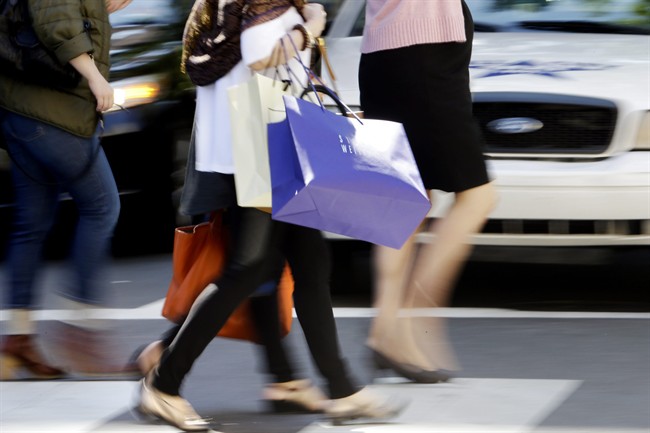Of the millions who hunted for bargains this Black Friday, many likely fell victim to the impulse buy.

“Retailers definitely encourage impulse purchasing,” said consumer psychologist Dr. Kit Yarrow of Golden Gate University. “Black Friday, in particular, is a day that people succumb.”
“It’s that limited time that adds stress to the purchasing equation and will cause someone to pull the trigger on a purchase.”
It’s easy to get caught up in the “deal” and get stuck with something you don’t really care that much to have, she explained.
A 2012 Bank of Montreal survey found that 55 per cent of Canadians have bought something they might not need because it was on sale.
More than half of respondents later regretted their purchases and 43 per cent sometimes spent more than they earned in a month. Another third had to borrow money or take out a loan to cover their impulse spending.
Canadians under 30 were most likely to be effected by this kind of emotional shopping, with one in three unable to afford something they needed because of spending on “wants,” the survey said.
READ MORE: How much that Black Friday deal could really cost you if you pay on plastic
Tricks of the trade
The senses
Music is one of the longest-standing techniques stores have used to get you to spend more. But it’s not the only one.
Shopping can attack all your senses.
“Whether it’s smells, or free tastes, or how something feels — even things like how squishy the carpet is below our feet — these things actually have a great impact in how long…we want to linger in a store and how willing we are to spend more,” Yarrow said.
She believes we’ve become more vulnerable than ever to sensory marketing, in part due to technology and how easily distractible it’s made us.
Layout
“The longer people spend in a store, the more [money] they typically spend.”
Retailers hope the more products they expose you to, the more likely it is that something will catch your eye, according to Yarrow.
IKEA is a prime example. If you’ve ever gone there looking for a piece of furniture but, after wandering through the maze, left with pretty napkins, candles and planters — you’ve undergone what some call “Gruen transfer.”
Named after Austrian architect Victor Gruen, who designed the shopping mall, the Gruen effect as it’s also called is “the moment when you stop shopping for something in particular, and start just shopping in general.”
Product placement
Grocery stores have been known to put more expensive items at eye-level. Some will also put expensive items at the front, so that everything else once you get inside seems like a better deal.
One of the most effective tactics, though, is the “add-on” near cash registers.
Clothing stores are notorious for this. The seemingly cheap items can start to look appealing to tired shoppers standing in line.
“Once people decide to buy something, that’s when they’re sort of vulnerable…they’re more open-minded to adding additional purchases,” Yarrow said.
It happens when you shop online, as well.
“They’ll have ‘customers who purchased this also purchased this other thing.’ Or ‘wouldn’t this go nice with this?'”
The competition
Sometimes it just boils down to the classic rule of supply and demand. And our survival instincts.
A limited-time sale, especially when the inventory is limited, can be a recipe for regret.
“Retailers in some ways manipulate this. They deliberately don’t have enough merchandise for everyone…and shoppers know that. They know it’s going to sell out and that inspires them to be competitive,” Yarrow said after an H&M collaboration with high-end designer Balmain caused a frenzy around the world.
“Anytime we perceive scarcity it kind of activates a competitiveness in us, and that causes us to not think clearly.”
“It kind of brings out the animal spirit.”
How to avoid the temptation
Yarrow’s number one piece of advice: get organized, and take time to make a list of exactly who you want to shop for and what you want to buy.
Perhaps even more important than that is to actually stick with the list.
A survey earlier this year found that even with list in hand, 43 per cent of Canadians will stray and make impulse purchases.
READ MORE: Would pricing items in terms of hours worked change how you shop?
A more enjoyable (and tastier) impulse-curbing technique could be to try eating a piece of chocolate before going shopping.


Comments